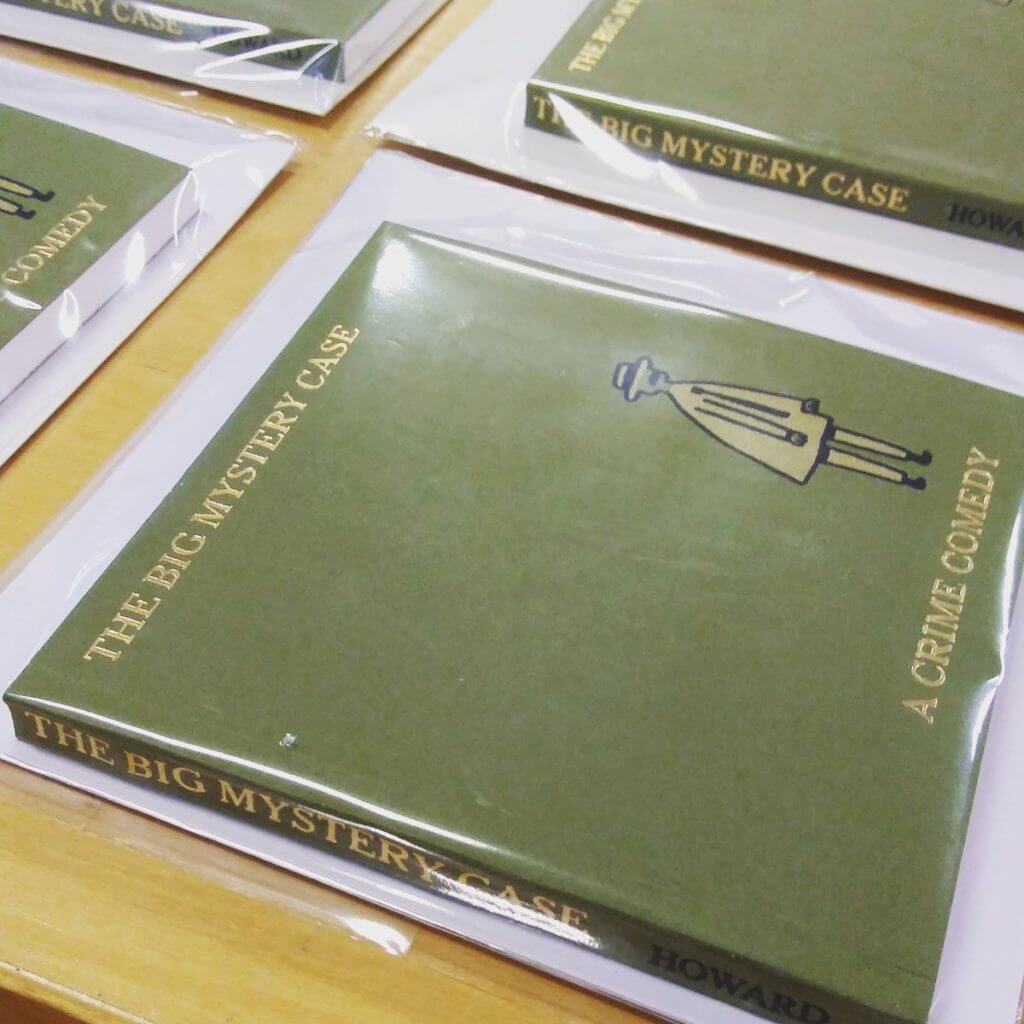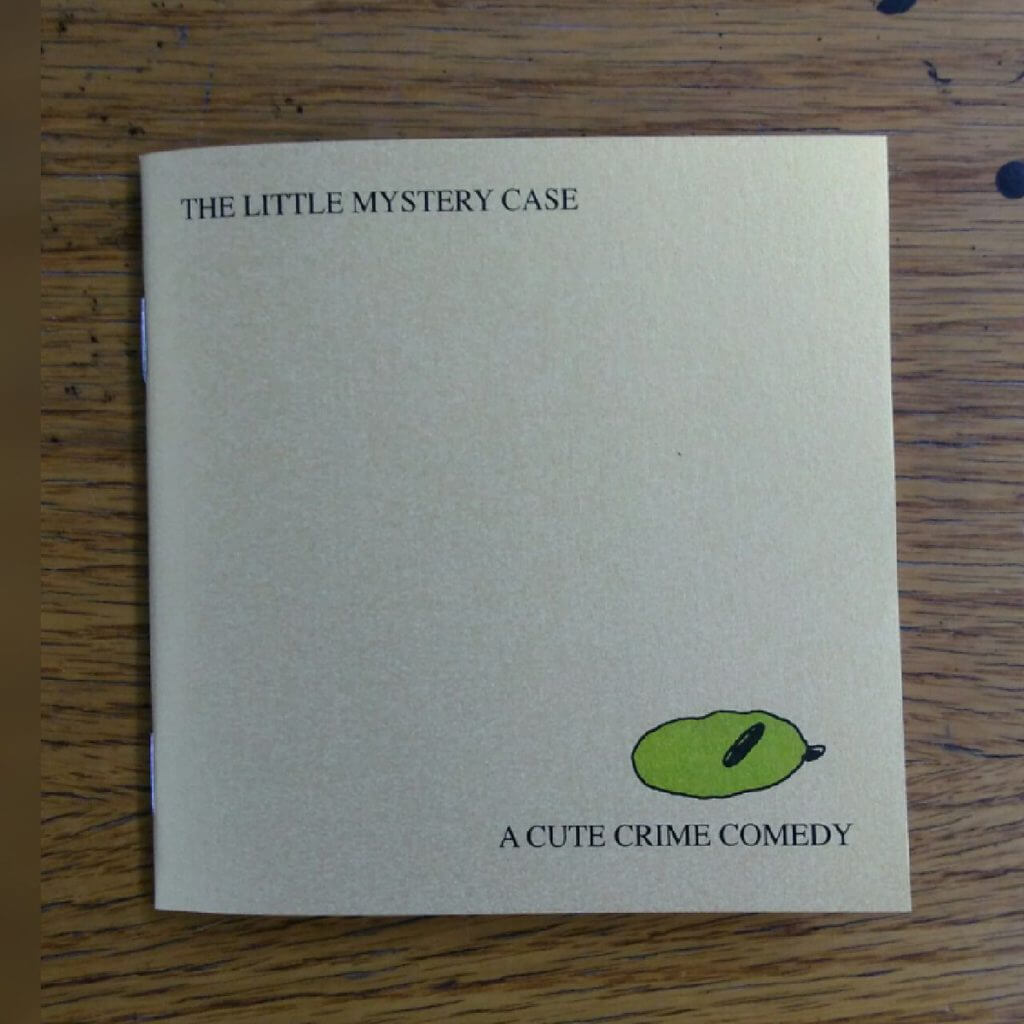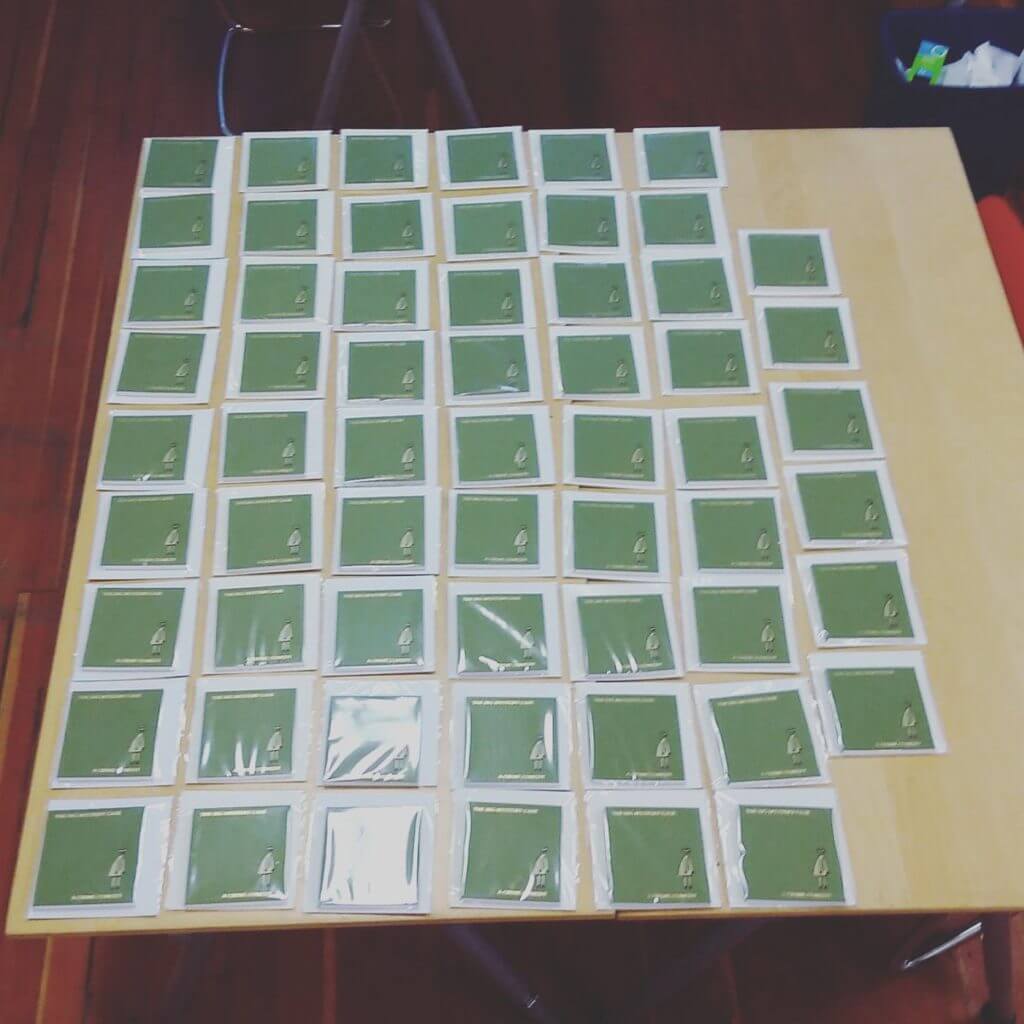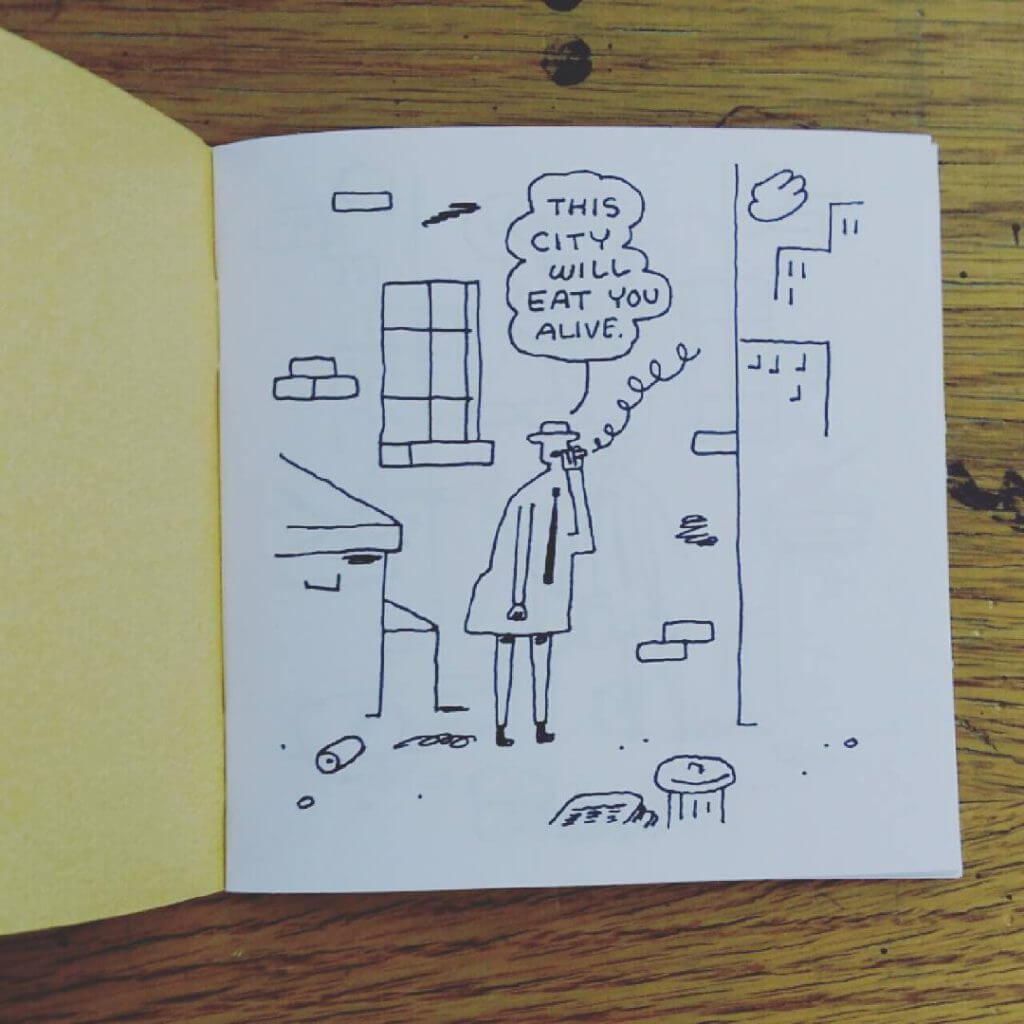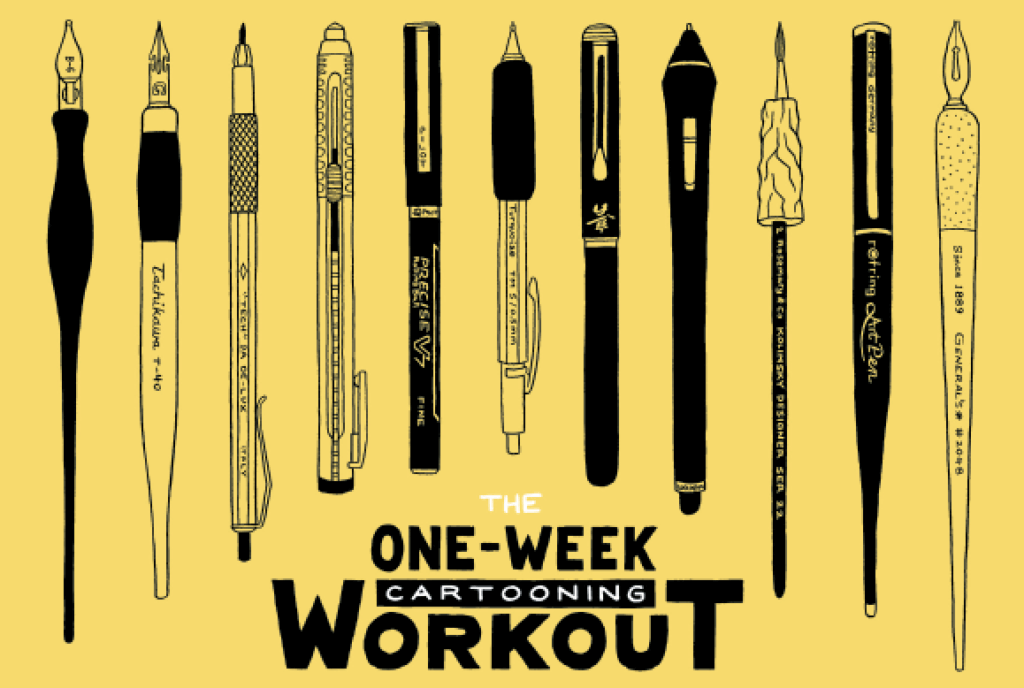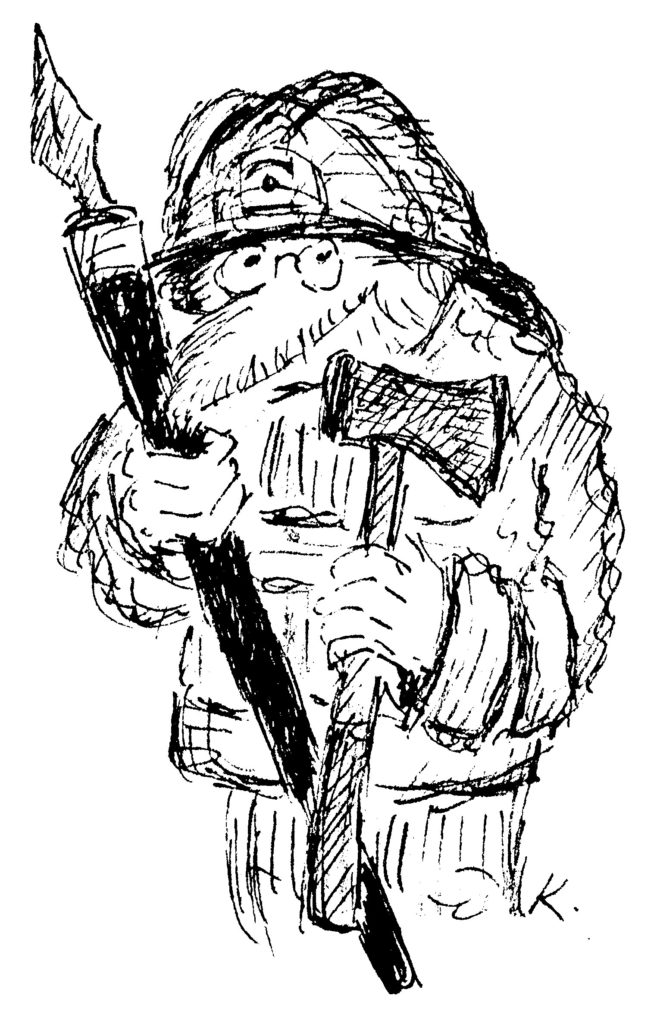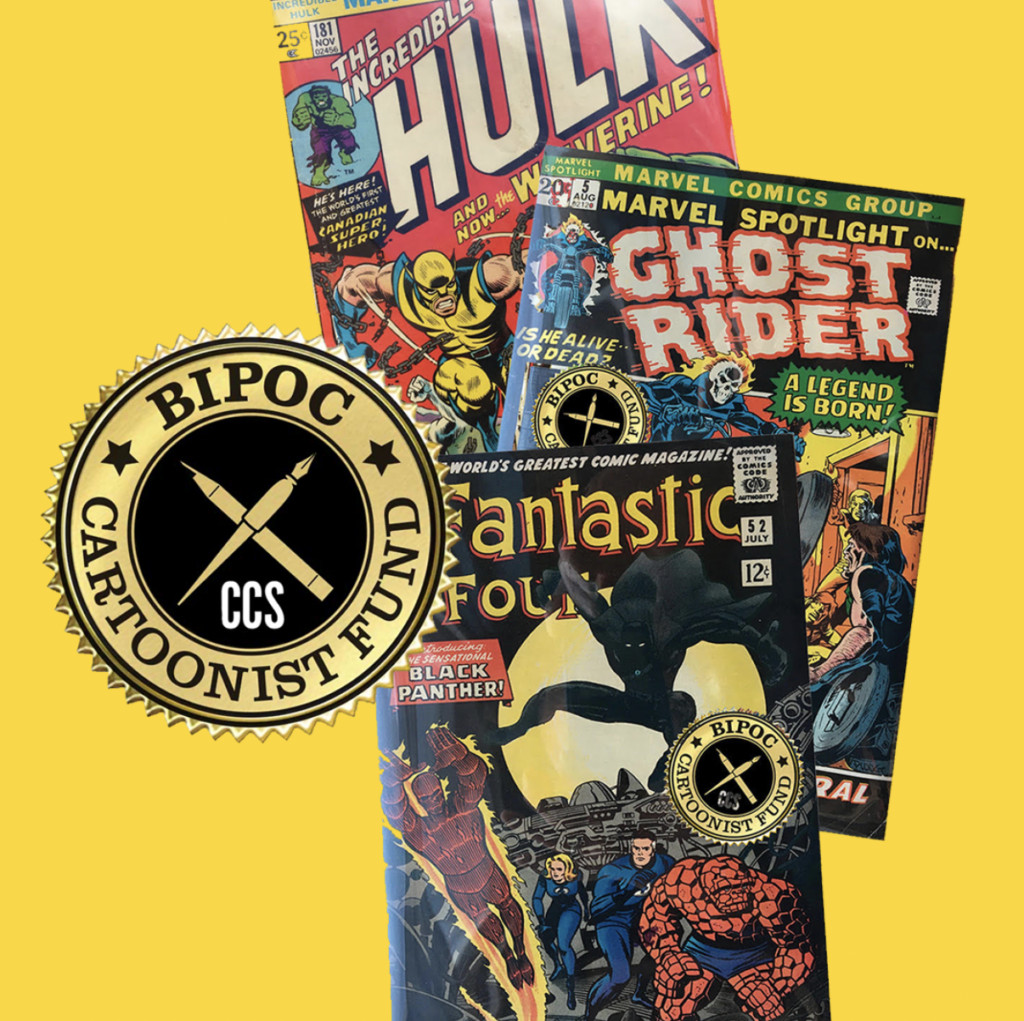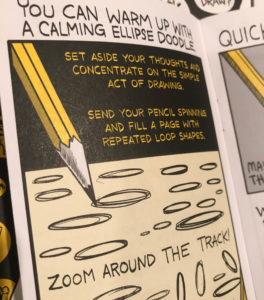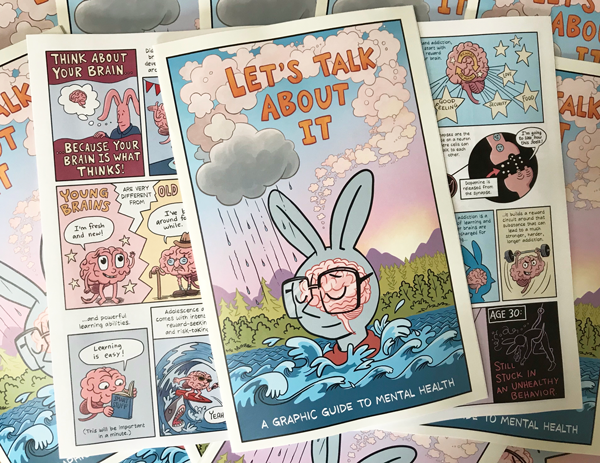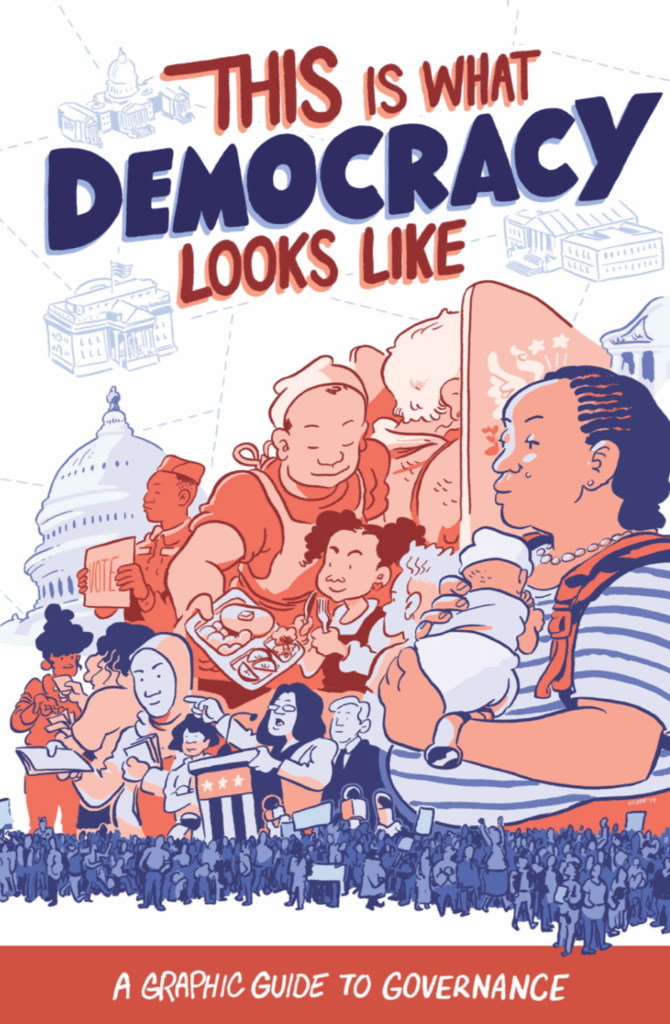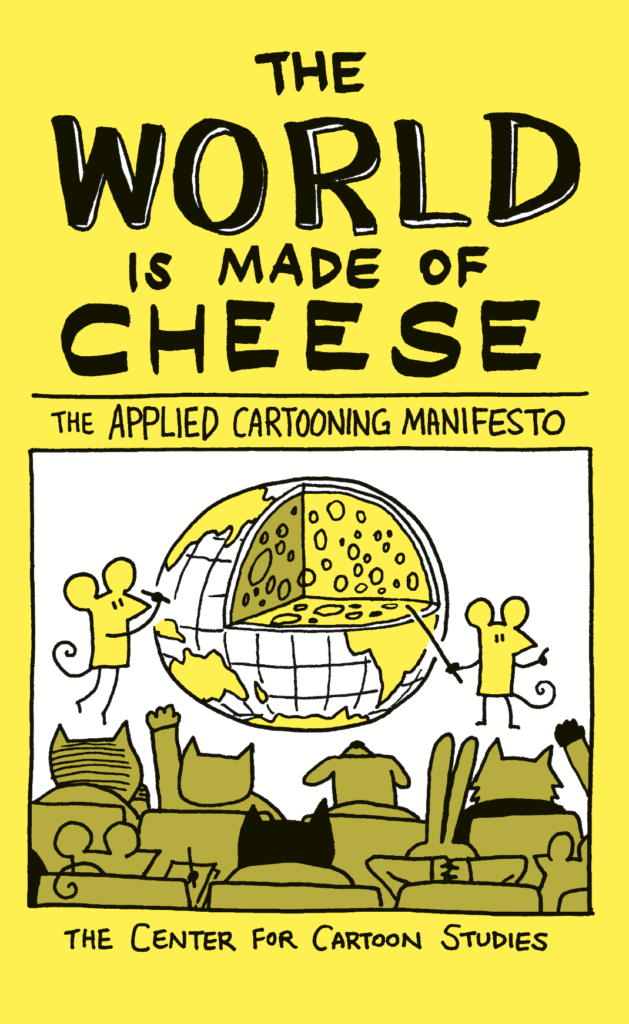October 23, 2017
The latest comic from Luke Howard (′13) was The Big Mystery Case, released at CAKE 2017. In addition to co-teaching the production class at CCS with Jon Chad and all the other stuff he does for CCS, Luke is the creator of Our Mother (Retrofit, 2016) and Talk Dirty to Me (AdHouse Books, 2016).
Where can we buy your newest comic, released back at CAKE? Is it the same amazing, hand-bound version you sold at CAKE or is it a less fancy but more accessible version?
I made 60 extremely excessive versions of The Big Mystery Case for CAKE. They are hand-sewn, gold-foil stamped, with a two color screen print. Along with that, each copy has a miniature envelope in the back with a secret mini letter that has a mini stamp on it, and each letter is hand addressed. All of that is packaged in a custom bag with a 24-page mini comic called The Little Mystery Case. Each book takes me about 4 hours to make, which is why I will only ever make those 60 copies.
I made a small run of 30 at a more affordable version for SPX, but even that proved to be more excessive than I intended. I couldn’t help but do the mini letter in that version, and they’re still hand perfect-bound, so even the “affordable” version ended up taking hours longer than I had hoped. I may do another run of 30 for MICE, but I won’t be surprised if that plan falls through.
I do plan to post an online version this winter just so people can read it. (ED: Phew!)
Why did you decide to go so crazy on the production process for this comic?
I teach book production at CCS, so I wanted to build a project around learning some new bookmaking techniques. In this case I really wanted to learn how to foil stamp. CCS has a healthy relationship with Book Preservations over at Dartmouth, and I wanted to take advantage of that. An amazing book artist named Lizzie Curran over there held my hand through the foil stamping process. I burned myself several times, but it was totally worth it. I also wanted to brush up on screen printing because it has never been my strong suit. Luckily Emily Parrish, a very skilled screen printer, was able to help me through that process, and I feel like I learned a lot that I can take back to my students.
But the craziness of the production for this book went beyond me learning new techniques. The story itself is drawn in a very pared-down, almost child-like style, and the content is equally unprofessional. I thought it would be interesting to juxtapose the unprofessional nature of the interior comic and the almost hyper-professional exterior production. I feel like the polished quality of the bookmaking brings something interesting to the experience of reading the book, and the silliness of the story brings a level of humor to the crazy production. I enjoyed playing with the antithetical relationship between the exterior and interior aspects of this book.
What was the production process like?
The short answer is it was a bit of a nightmare. The longer answer is that it was a very rewardingly frustrating process. I think if I had known how much work it was going to be on the outset, I never would have done it. Luckily I was ignorant enough to the process that I mistakenly moved forward. The first thing I had to do was the foil stamping. Partly because Lizzie over at Dartmouth had only a few small windows in her schedule to facilitate the stamping of the books. This was maybe the most labor-intensive part of the process. We had to typeset each line of the book by hand, foil stamp that line, then typeset the next line, etc. So every line you see on the book’s cover represents a couple of hours of typesetting and foil stamping. So for example, the title of the book is “The Big Mystery Case,” so we had to typeset that title for the cover, and then foil stamp. Next we had to re-typeset to a different size, change the whole rig around, so that we could foil stamp the spine—repeating that process several times for things like the subtitle, which is “A Crime Comedy.” The foil stamping took about 8 hours over the course of two different days. After that, I met up with Emily back at the Center for Cartoon Studies so that we could screen print other portions of the cover. That was another full day of work. After that I had to drill and hand-sew the guts of the book to prepare them to be glued into the covers. The sewing also took an incredible amount of time—I would say each book took me about 20 minutes or more to sew. Thankfully, Angela Boyle (ED: Yes, that’s me) provided some much-needed tutelage on how to sew the text block (interior pages). With the text block completed, it was just a matter of gluing them into the covers and playing the waiting-for-things-to-dry game. Finally, each book gets three trims: on the top, bottom, and face of the book.
What tools did you use to draw this comic?
For this comic I wanted it to feel simple and immediate; I didn’t want to get bogged down with how “good” it might look, or to go down the rabbit hole of finding the best tools, etc. So I intentionally went with the pen I most prefer when I’m just drawing quick and unimportant things. The pen is called the Paper Mate Flair pen (black, medium), and I absolutely LOVE the way it draws and the line it creates. Unfortunately I don’t think the pen is particularly light-fast or safe to use with things like watercolor. For my other comics, I like to use dip pens (either the Hunt 107 [ED: Now Speedball 107] or the Leonardt EF Principal), Rapidographs, and the Carbon Pen.
When can we expect another Luke Howard comic baby in the world?
I have plans for some floppies in the spring of 2018, and I hope some bigger projects in 2019. Fingers crossed!
Interview by Angela Boyle (′16).
Photos from Luke Howard.
Tags: cartoon Studies. minicomic, CCS Alum, CCS Faculty, Graphic Novel, interview, Luke Howard, Self-published, The Big Mystery Case
